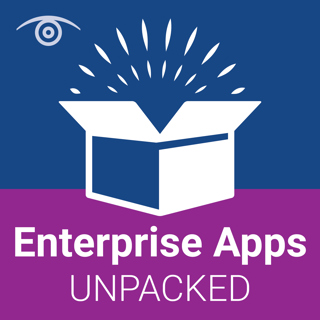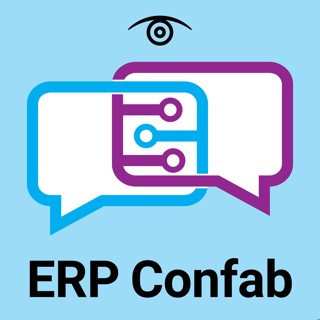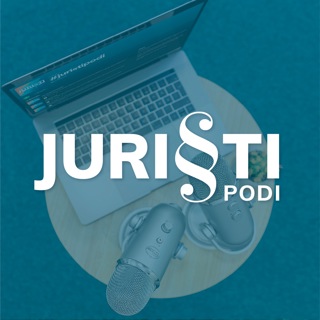
How AI-driven digital ecosystems can improve sustainability
ERP sustainability software mostly focuses on data collection and reporting requirements of environmental, safety and governance (ESG) policies and typically isn't intended to control the business processes that impact the physical environment. But other digital technology has been used for years to monitor and optimize resource use. Now IoT sensors are increasingly paired with digital twins and AI, and linked with ERP and other enterprise applications, to form a complete digital ecosystem for environmental sustainability. In this episode, we explore digital sustainability technologies, their benefits and challenges, and whether more use of the technology will be a net benefit for addressing climate change. Featuring: Peter Weckesser, Chief Digital Officer, Schneider Electric In today's episode, we'll also cover: New capabilities enabled by generative and agentic AI. The sustainability technologies that have the quickest ROI. Schneider Electric's work to optimize resource use in AI data centers. References: ESG strategy and management: A guide for businesses Tech a double-edged sword in race to sustainability Next-gen energy: Reimaging the grid of tomorrow (Peter Weckesser) To learn more about enterprise applications, check out Search ERP. To watch the video version our podcast, subscribe to our YouTube channel, @EyeOnTech.
20 Loka 33min

Is AI-powered search the new corporate learning powerhouse?
The internet transformed corporate learning from a paper-based, in-person process to one that is largely delivered in digital form, on demand from nearly any device or location. More recently, generative AI has provided learning and development (L&D) teams with a tireless assistant that can crank out educational content in minutes. Now AI-powered search is sparking another transformation as employees increasingly use it to find quick answers while they work, learning gradually in ways that suit their personal styles. In this episode, we examine the evidence for the trend, what L&D professionals should do differently, and how the search technology could affect legacy software, especially learning management systems. Featuring: Josh Bersin, Founder and CEO, The Josh Bersin Company In today's episode, we'll also cover: How AI-powered search changes the way learning content is designed and delivered. Whether using AI search for training could alleviate worker's fears of being replaced by AI. What Bersin has learned about the emerging search trend from his company's Galileo AI assistant for HR professionals. What new developments in AI-assisted search from vendors like Google and Anthropic mean for the corporate learning trend. References: Workplace learning: A complete guide for businesses What is GenAI? Generative AI explained Galileo Learn, Bersin's AI-driven HR training tool To learn more about enterprise applications, check out Search ERP. To watch the video version our podcast, subscribe to our YouTube channel, @EyeOnTech.
6 Loka 26min

Can you really trust AI with procurement tasks?
Procurement has become a strategic priority with significant impact on the bottom line. It's a data-intensive process that requires communicating with large numbers of suppliers, products and services – the kind of complex, transaction-heavy workflow that is uniquely suited to being automated with generative and agentic AI. In this episode, we examine how AI can make procurement more effective and efficient, where it fits in the procurement technology landscape and how it assists – but doesn't replace – humans in the loop. Featuring: Keith McFarlane, CTO, Globality In today's episode, we'll also cover: How the Globality cloud platform works. The capabilities of Glo, the platform's AI agent. Where the biggest cost savings are. The importance of getting procurement workers to trust AI. References: McFarlane explains why agentic AI may herald a golden age for procurement 10 real-world agentic AI examples and use cases Globality CEO on agentic AI and the future of procurement What is GenAI? Generative AI explained To learn more about enterprise applications, check out Search ERP. To watch the video version our podcast, subscribe to our YouTube channel, @EyeOnTech.
8 Syys 33min

How EY is training employees to use AI
AI's growing ability to take over human tasks has many people worried about losing their jobs. Some companies are addressing these concerns by educating employees on how to instead use AI as a helper that frees them for more creative work and adds value. In this episode, we explore ways to encourage AI use without mandating it, the kinds of training that work best and how to develop a curriculum that covers different experience levels and jobs. Featuring: Joe Depa, global chief innovation officer, EY In today's episode, we'll also cover: EY's massive program for training its 400,000 employees in AI. Which parts of the business are partly automated with AI. Ways to gauge the effectiveness of AI training. References: What is GenAI? Generative AI explained The AI skills gap and how to address it Workplace learning: A complete guide for businesses How to implement generative AI for 400,000 employees To learn more about enterprise applications, check out Search ERP. To watch the video version our podcast, subscribe to our YouTube channel, @EyeOnTech.
25 Elo 26min

Is geospatial data the real game changer for digital twins?
Digital twins – virtual representations of real-world things – are a hot topic, and they're becoming more capable with the addition of AI and geospatial awareness. In this episode, we explain how AI-enhanced spatial digital twins work, how they're being used today, what it takes to deploy them, and their potential uses. Featuring: Eric Liu, founder and CEO of TwinMatrix Technologies In today’s episode, we'll also cover: How spatial twins differ from other digital twins Challenges to broader deployment How low-code/no-code tools could "democratize" spatial twin development References: What is a digital twin? Advantages and disadvantages of digital twin technology How digital twins can help support sustainability Debunking the myth: Digital twins are more than just 3D models To learn more about enterprise applications, check out Search ERP. To watch the video version our podcast, subscribe to our YouTube channel, @EyeOnTech.
11 Elo 33min

Introducing our new podcast: Enterprise Apps Unpacked!
What separates successful enterprise technology implementations from costly failures? Here on Enterprise Apps Unpacked, we’ll do a deep dive into strategies that actually deliver results. Every other Monday, veteran IT journalist David Essex interviews corporate leaders, industry experts and vendors—the people who are truly in the know—about important developments in ERP, HR and supply chain systems and the other applications that run the business. For business and IT leaders, these conversations cut through the chatter to help them make smart decisions about how they buy, deploy and use enterprise software. Episode 1 drops on August 11, 2025 at 5am ET. Rate and review the podcast to tell us how you like this new content. Find us on YouTube at Eye on Tech or explore our written work on Search ERP.
6 Elo 1min

SAP makes case for integrated “flywheel” of AI, data and applications
SAP has faced numerous challenges in recent years, but three big ones stand out: moving its on-premises products to the cloud; convincing customers to adopt its current ERP platform, S/4HANA Cloud; and meeting the unprecedented demand for artificial intelligence by developing practical AI applications. SAP touted significant progress on all three fronts at its annual Sapphire conference, which was held on consecutive weeks this month, first in Orlando and then in Madrid. It repositioned S/4HANA Cloud ERP as a mix-and-match, AI-infused "business suite" – a throwback to the brand name of its previous ERP flagship. It augmented its primary data platform, Business Data Cloud, with prebuilt, composable applications that combine data products with AI and simulation features. And it embedded the Joule AI co-pilot in more business processes across the application suite, making it more autonomous and omnipresent as a user-friendly interface to ERP. The result, SAP claimed, is an integrated "flywheel" of AI, data and apps that feed off each other to accelerate digital transformation. While reaction was generally positive, it was leavened with the wait-and-see attitude that is typical after the ambitious promises and glitzy presentations of a software conference. SAP still has integration and data management work to do if the components of the business suite – especially cloud platforms like Ariba and Concur that it acquired – are to work seamlessly together. In the podcast, three Informa TechTarget editors offer their analysis of Sapphire developments and observations from the Orlando and Madrid events: Jim O’Donnell, news director at SearchSAP; Brian McKenna, enterprise applications editor at London-based ComputerWeekly; and industry editor David Essex. Other topics discussed include: how far SAP has progressed in its AI, cloud and S/4HANA migration efforts interviews with SAP executives and partners at the conference why integration with SAP’s digital adoption platform, WalkMe, could make Joule more autonomous and personalized Host: David Essex, Industry Editor, Informa TechTarget Subscribe via Spotify: https://open.spotify.com/show/2TakQHezOu42MCKSQRigDv Subscribe via Apple Podcasts: https://podcasts.apple.com/us/podcast/erp-confab/id1669762576 Subscribe via YouTube Music: https://www.youtube.com/playlist?list=PL5OdmBrO1LpmcDea2Zb-8mNQt0nLg-3SK
29 Touko 26min





















